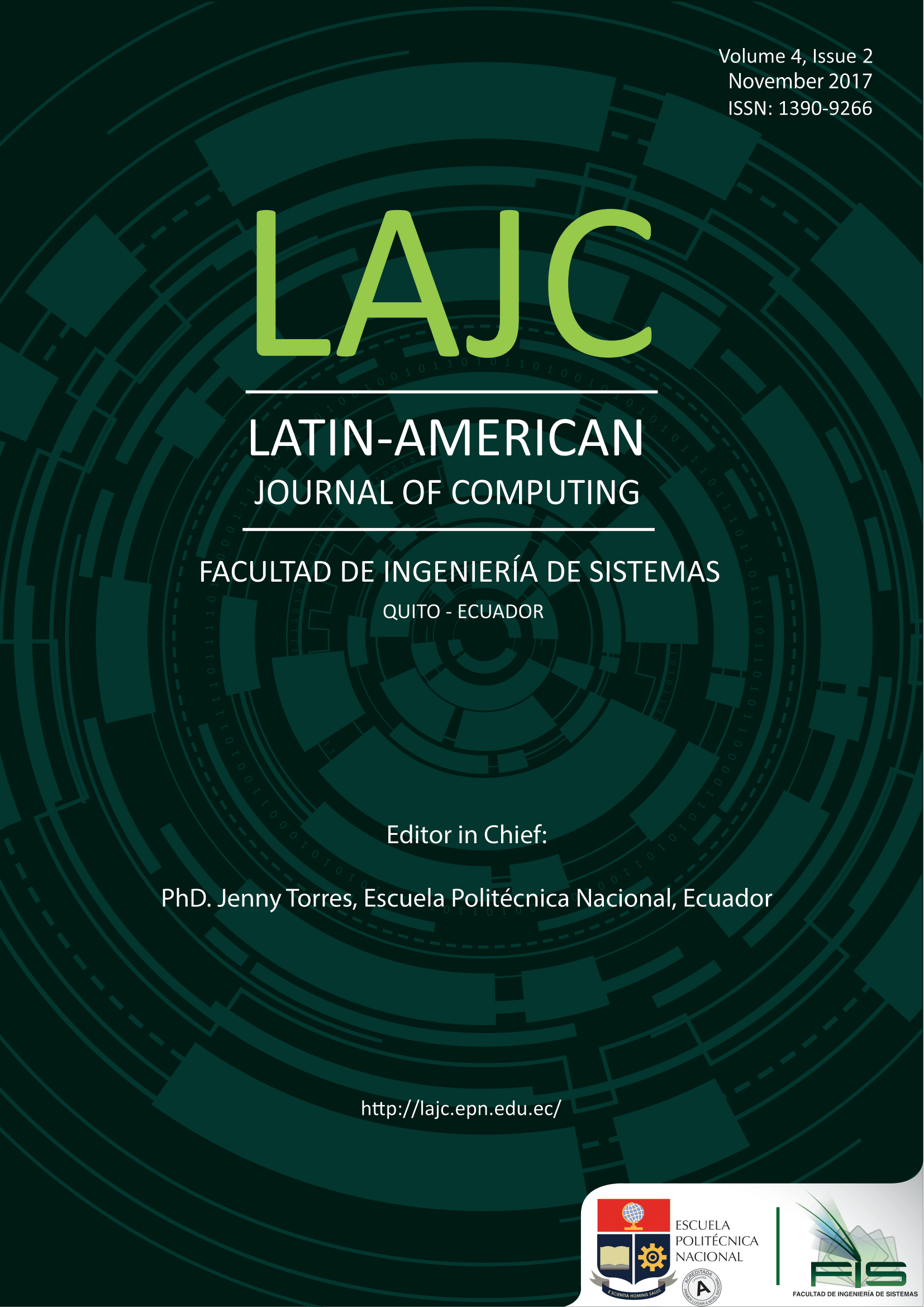Children learning of programming: Learn-Play-Do approach
Keywords:
Computers & programming, children learning, Scratch.Abstract
Writing computer programs is a skill that can beintroduced to children and adolescents since early ages. Althoughchildren can gain skills in coding, there is a lack of motivationand easiness at the time to write logic structures. It raises thequestion, how can children be encouraged to code in a successfulenvironment of learning and fun?. To address this question,this paper shows an experimental approach called ”Learn-Play-Do” for introducing children in the programming. It shows that(1) it is feasible for children to learn about programming byfollowing the proposed approach with (2) encouraging levels oflearning, usefulness content and self-learning programming in(3) a developing country context. The results of an empiricalexperimentation with forty-one children are reported. This workwas implemented as a social project linking the university withthe community.
Downloads
References
D. H. Clements and D. F. Gullo, “Effects of computer programming on young children’s cognition,”Journal of educational psychology, vol. 76,no. 6, p. 1051, 1984.
C. Duncan, T. Bell, and S. Tanimoto, “Should Your 8-year-old Learn Coding?” in Proceedings of the 9th Workshop in Primary and Secondary Computing Education, ser. WiPSCE’14.New York, NY, USA: ACM,2014, pp. 60–69.
J. Lochhead and J. Clement,Cognitive Process Instruction. Researchon Teaching Thinking Skills. ERIC, 1979. [Online]. Available: https://eric.ed.gov/?id=ED234997
UKCRC, “UK Computing Research Committee,” 2010. [Online]. Available: http://www.ukcrc.org.uk/
K. Mayerov?, “Pilot activities: LEGO WeDo at primary school,” in Proceedings of 3rd International Workshop Teaching Robotics, Teachingwith Robotics: Integrating Robotics in School Curriculum, 2012, pp. 32–39.
M. C. Carlisle, T. A. Wilson, J. W. Humphries, and S. M. Hadfield,“RAPTOR: A Visual Programming Environment for Teaching Algorithmic Problem Solving,” in Proceedings of the 36th SIGCSE Technical Symposium on Computer Science Education, ser. SIGCSE ’05.NewYork, NY, USA: ACM, 2005, pp. 176–180.
M. Resnick, J. Maloney, A. Monroy-Hernández, N. Rusk, E. Eastmond,K. Brennan, A. Millner, E. Rosenbaum, J. Silver, B. Silverman, andothers, “Scratch: programming for all, ”Communications of the ACM, vol. 52, no. 11, pp. 60–67, 2009.
H. Lieberman, “Tinker: A programming by demonstration system for beginning programmers,”Watch what I do: programming by demonstration, vol. 1, pp. 49–64, 1993.
D. H. Clements and J. S. Meredith, “Turtle math,”Montreal: Logo Computer Systems (LCSI), 1994.
R. Osborne and P. Freyberg, The Implications of Children’s Science. Heinemann Educational Books, Inc, Jan. 1985.
G. Julian and I. Monserrate, “Proyecto EPN-FIS de Vinculación Social, Programación para niños Red Juega y Aprende.” 2015.
G. Kress, “Visual and verbal modes of representation in electronicallymediated,”Page to screen: Taking literacy into the electronic era, p. 53,1998.
M. Resnick, “Learn to Code, Code to Learn,” 2013. [Online]. Available: https://scratch.mit.edu/
——, “Scratch day,”EdSurge, May, 2013.
C. Kelleher, J. Hodgins, and S. Kiesler, “Motivating Programming: using storytelling to make computer programming attractive to more middleschool girls,” 2006.
Red juega y aprende, “Interactive game, Super Buho Bros at the Scratch MIT network, ”2015. [Online]. Available: https://scratch.mit.edu/projects/45950952/#editor
Q. Burkeand Y. B. Kafai, “Programming & storytelling: opportunities for learning about coding & composition, ”in Proceedings of the 9th international conference on interaction design and children. ACM, 2010, pp. 348–351. [Online]. Available: http://dl.acm.org/citation.cfm?id=1810611
J. Piaget, “Part I: Cognitive development in children: Piaget development and learning,”Journal of research in science teaching, vol. 2, no. 3, pp.176–186, 1964.
A. Kozulin,Vygotsky’s educational theory in cultural context. Cambridge University Press, 2003.
N. Chomsky, “A review of BF Skinner’s Verbal Behavior,”Language, vol. 35, no. 1, pp. 26–58, 1959.
S. Suzuki and W. Suzuki, Nurtured by love: The classic approach totalent education. Alfred Music, 1983.[22] E. Hermann,Shinichi Suzuki: The Man and His Philosophy (Revised).Alfred Music, 1999.
S. Suzuki and M. L. Nagata,Ability development from age zero. Alfred Music, 2014.
D. G. Hazlewood, S. Stouffer, and M. Warshauer, “Suzuki meets P?lya: teaching mathematics to young pupils, ”The Arithmetic Teacher, vol. 37,no. 3, p. 8, 1989.
N. Mandran, “M ́ethode de conduite de la recherche en informatiquecentr ́ee humain : processus et inclusion d’une d ́emarche centr ́ee utilisateur,” Ph.D. dissertation, Nov. 2015, working paper or preprint.
Red juega y aprende, “Scratch - Imagine, Program, Share,” 2015.[Online]. Available: https://scratch.mit.edu/studios/932042/
Downloads
Published
Issue
Section
License
Copyright Notice
Authors who publish this journal agree to the following terms:
- Authors retain copyright and grant the journal right of first publication with the work simultaneously licensed under a Creative Commons Attribution-Non-Commercial-Share-Alike 4.0 International 4.0 that allows others to share the work with an acknowledgement of the work's authorship and initial publication in this journal.
- Authors are able to enter into separate, additional contractual arrangements for the non-exclusive distribution of the journal's published version of the work (e.g., post it to an institutional repository or publish it in a book), with an acknowledgement of its initial publication in this journal.
- Authors are permitted and encouraged to post their work online (e.g., in institutional repositories or on their website) prior to and during the submission process, as it can lead to productive exchanges, as well as earlier and greater citation of published work.
Disclaimer
LAJC in no event shall be liable for any direct, indirect, incidental, punitive, or consequential copyright infringement claims related to articles that have been submitted for evaluation, or published in any issue of this journal. Find out more in our Disclaimer Notice.










